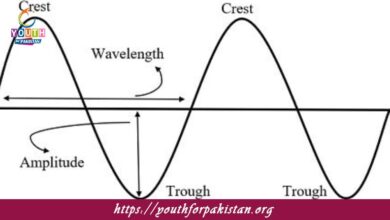Group Trends Electropositivity MDCAT MCQs with Answers

Welcome to the Group Trends Electropositivity MDCAT MCQs with Answers. In this post, we have shared Group Trends Electropositivity Multiple Choice Questions and Answers for PMC MDCAT 2024. Each question in MDCAT Chemistry offers a chance to enhance your knowledge regarding Group Trends Electropositivity MCQs in this MDCAT Online Test.
How does electropositivity change as you move down Group 1 elements?
a) Increases
b) Decreases
c) Remains constant
d) First increases, then decreases
In which group does electropositivity increase as you move from top to bottom?
a) Group 1
b) Group 2
c) Group 13
d) Group 14
Which element in Group 2 has the highest electropositivity?
a) Beryllium
b) Magnesium
c) Calcium
d) Barium
How does electropositivity trend across a period from left to right?
a) Increases
b) Decreases
c) Remains constant
d) First increases, then decreases
Which of the following has the highest electropositivity among Group 13 elements?
a) Boron
b) Aluminum
c) Gallium
d) Indium
In Group 1, which element is the most electropositive?
a) Lithium
b) Sodium
c) Potassium
d) Cesium
How does electropositivity change as you go down Group 16 elements?
a) Increases
b) Decreases
c) Remains constant
d) Fluctuates
Which Group 14 element is the most electropositive?
a) Carbon
b) Silicon
c) Germanium
d) Tin
In Group 15, which element has the highest electropositivity?
a) Nitrogen
b) Phosphorus
c) Arsenic
d) Antimony
How does electropositivity trend as you move down Group 17 elements?
a) Increases
b) Decreases
c) Remains constant
d) Fluctuates
Which element in Group 2 is the most electropositive?
a) Beryllium
b) Magnesium
c) Calcium
d) Strontium
How does electropositivity change across a period from left to right?
a) Increases
b) Decreases
c) Remains constant
d) First increases, then decreases
In Group 1, which element has the lowest electropositivity?
a) Lithium
b) Sodium
c) Potassium
d) Rubidium
Which element in Group 13 has the lowest electropositivity?
a) Boron
b) Aluminum
c) Gallium
d) Indium
In Group 14, which element has the lowest electropositivity?
a) Carbon
b) Silicon
c) Germanium
d) Lead
As you move down Group 15, how does electropositivity change?
a) Increases
b) Decreases
c) Remains constant
d) Fluctuates
Which Group 16 element has the lowest electropositivity?
a) Oxygen
b) Sulfur
c) Selenium
d) Tellurium
How does electropositivity trend in Group 18 as you move down the group?
a) Increases
b) Decreases
c) Remains constant
d) Fluctuates
Which element in Group 2 has the lowest electropositivity?
a) Beryllium
b) Magnesium
c) Calcium
d) Barium
In Group 1, which element has the highest electropositivity?
a) Sodium
b) Potassium
c) Rubidium
d) Cesium
Which of the following elements in Group 14 is the most electropositive?
a) Carbon
b) Silicon
c) Germanium
d) Tin
How does electropositivity change as you move from left to right in Group 15?
a) Increases
b) Decreases
c) Remains constant
d) Fluctuates
In Group 16, which element has the highest electropositivity?
a) Oxygen
b) Sulfur
c) Selenium
d) Tellurium
Which of the following elements in Group 13 has the highest electropositivity?
a) Boron
b) Aluminum
c) Gallium
d) Indium
How does electropositivity trend in Group 14 elements from carbon to lead?
a) Increases
b) Decreases
c) Remains constant
d) Fluctuates
Which element in Group 2 has the lowest electropositivity?
a) Beryllium
b) Magnesium
c) Calcium
d) Strontium
In Group 15, which element has the lowest electropositivity?
a) Nitrogen
b) Phosphorus
c) Arsenic
d) Antimony
How does electropositivity change as you move down Group 13?
a) Increases
b) Decreases
c) Remains constant
d) Fluctuates
In Group 1 elements, which one has the lowest electropositivity?
a) Lithium
b) Sodium
c) Potassium
d) Cesium
How does electropositivity trend across a period from left to right?
a) Increases
b) Decreases
c) Remains constant
d) Fluctuates
Which Group 14 element has the highest electropositivity?
a) Carbon
b) Silicon
c) Germanium
d) Lead
How does electropositivity change from top to bottom in Group 16?
a) Increases
b) Decreases
c) Remains constant
d) Fluctuates
Which element in Group 13 has the lowest electropositivity?
a) Boron
b) Aluminum
c) Gallium
d) Indium
How does electropositivity trend as you move down Group 2?
a) Increases
b) Decreases
c) Remains constant
d) Fluctuates
In Group 15, which element exhibits the highest electropositivity?
a) Nitrogen
b) Phosphorus
c) Arsenic
d) Antimony
Which element in Group 1 has the highest electropositivity?
a) Lithium
b) Sodium
c) Potassium
d) Rubidium
How does electropositivity vary in Group 14 from carbon to lead?
a) Increases
b) Decreases
c) Remains constant
d) Fluctuates
In Group 16, which element is the least electropositive?
a) Oxygen
b) Sulfur
c) Selenium
d) Tellurium
How does electropositivity trend across a period from left to right?
a) Increases
b) Decreases
c) Remains constant
d) Fluctuates
Which Group 2 element has the highest electropositivity?
a) Beryllium
b) Magnesium
c) Calcium
d) Barium
If you are interested to enhance your knowledge regarding Physics, Chemistry, Computer, and Biology please click on the link of each category, you will be redirected to dedicated website for each category.





